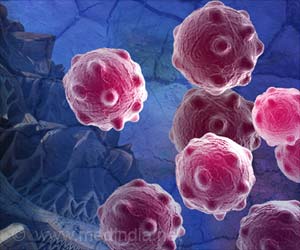Cutaneous T cell Lymphomas is caused by decreased expression of the protein SATB1 and the drugs that cause SATB1 to become re-expressed can be used for the lymphoma treatment.

‘Cutaneous T cell Lymphomas (CTCL) is caused by decreased expression of the protein SATB1 and the drugs that cause SATB1 to become re-expressed can be used for the lymphoma treatment. Methylation inhibitors show promising results in CTCL.’
Read More..




The study led by a team of Moffitt immunologists and hematologists, including Jose Conejo-Garcia, Ph.D., Javier Pinilla-Ibarz, M.D., Ph.D. and Lubomir Sokol, M.D., Ph.D. is published in The Journal of Clinical InvestigationRead More..
To understand how CTCL develops, they demonstrated that decreased expression of the protein SATB1 contributes to CTCL development and the drugs that cause SATB1 to become re-expressed may be potential treatment options for this disease.
Role SATB1
SATB1 is a protein that plays an important role in cell death, proliferation and invasion, and is also involved in the processes that control T cells differentiations. According to the recent reports, mycosis fungoides is associated with lower levels of SATB1. This plays an important role in the development of this disease.
The researchers used a mouse model that lacked SATB1 in combination with overexpression of NOTCH1, which is known to be involved in the development of CTCL. It was observed that in these mice, there was enlargement of spleens and livers, swollen lymph nodes, and a high level of T cells. These mice lived for a significantly shorter time than control mice.
Advertisement
The researchers confirmed these observations by showing that T cells from Sézary syndrome patients have significantly lower levels of SATB1 than cells from healthy donors.
Advertisement
The researchers then focused on the upstream processes to determine how SATB1 loss occurs in patients’ samples. They found that the process called epigenetic regulation plays an important role in this loss. They specifically showed that the DNA regulatory proteins called histones become methylated, which results in loss of SATB1 expression.
These inhibitors of methylation prevented the growth of Sézary syndrome cells more effectively than the drug romidepsin, which is used commonly to treat CTCL patients.
The researchers believe that these preclinical studies will lead to clinical trials of methylation inhibitors in CTCL patients.
The first author of the study Carly Harro said, “Our results offer new insight into the pathophysiology of CTCL, as well as a mechanistic rationale for targeting histone methyltransferases to abrogate malignant expansion and skin homing in advanced CTCL patients.”
Source-Medindia










